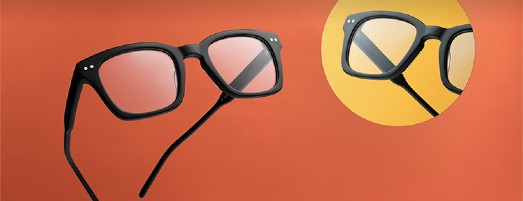Why are my eyes red?
Updated JUN 5, 2023 • 11 min read
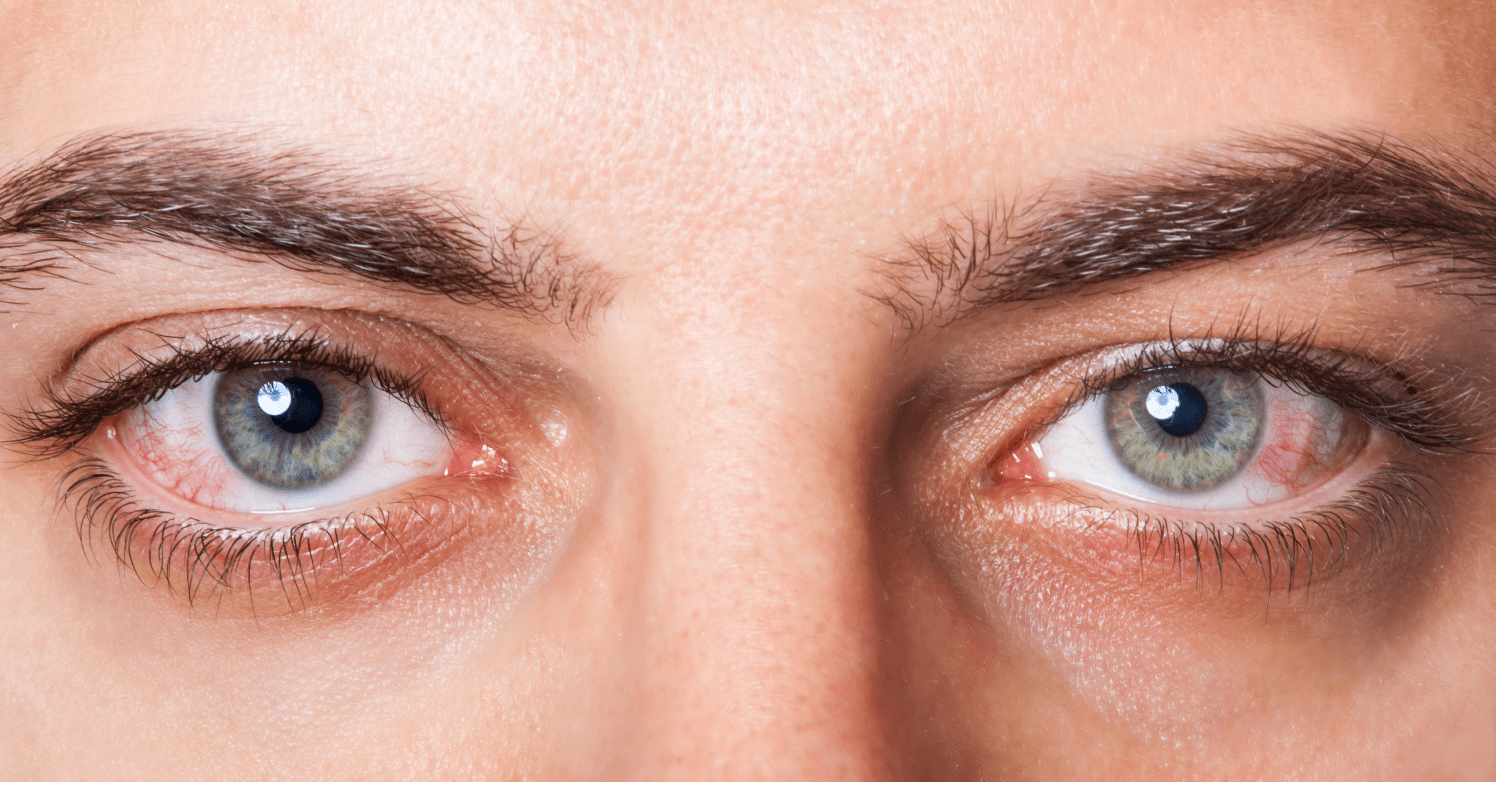
Summary in 30 seconds:
What are red eyes? We’ll elaborate a bit about the eye’s surface before diving into the causes of red eyes, related health conditions, and tips on how to avoid it from happening.
But first, the eye’s surface when everything is fine.
The structures that comprise the eye’s surface are responsible for keeping the eye moist, washing away germs, grit, and other invaders. To keep the eyes looking and feeling their best, the eyelids, conjunctiva, cornea and glands responsible for producing healthy tears, must work together.
A healthy, non-irritated conjunctiva is a clear lining located over the sclera (the white portion of the eye) and continues to line the surfaces underneath the upper and lower lids.
The cornea forms the tough but clear front surface. The lacrimal and accessory glands produce the watery component of tears. Meibomian glands are oil producing glands found within the upper and lower lids. The conjunctiva is home to goblet cells.
These cells produce mucin. The tear combination produced by these cells and glands form the tear film. The eyelids then act as windshield wipers to smooth the tear film across the eyes.
In this article:
- Why do eyes get red?
- What are environmental causes of red eye?
- What are mechanical causes of red eyes?
- What are infectious causes of red eyes?
- What are systemic and eye health related causes of red eyes?
- Tips for clear and healthy eyes
Why are my eyes red sometimes?
Redness is an indication of inflammation. Figuring out why the eyes are red requires a bit of investigation.
Some causes of redness are benign while others are more serious and need an in depth evaluation. If redness is associated with pain and/or light sensitivity, it is necessary to be evaluated by an eye doctor. Do not risk your vision, there are sight threatening causes of redness.
Redness can be observed when blood vessels located between the conjunctiva and the white sclera become enlarged and filled with blood. This redness may range in color from mildly pink to dark red, and may be present in one eye or both eyes.
It is helpful to note if the redness came on suddenly, in one or both eyes.
Besides redness, what other symptoms are experienced?
Possible symptoms that go along with red eyes:
- Itching or pain
- Watery eyes with or without a goopy discharge
- A feeling of having something in the eye
These observations along with specialized equipment will help the eye doctor to evaluate the underlying cause of your red, irritated eyes.
What are environmental causes of red eyes?
- Irritants: The surface of the eyes is constantly being challenged by impurities such as smoke, smog, and dust from the surrounding environment.
These irritants are normally flushed out of the eyes by the tear film. Over the counter artificial tears will help to flush out these irritants.
- Pollens and allergens: These may blow into the eyes from anywhere – indoors or outdoors. A dry and/or windy environment is notorious for causing dry, irritated red eyes such as when traveling in a car or airplane.
Wear appropriate clothing to avoid the need for air conditioning or heat. Use an eye mask to protect the ocular surface. Bring single dose non-preserved artificial tears for additional comfort. - Avoid irritated eyes while traveling: Wear appropriate clothing to avoid the need for air conditioning or heat. Use an eye mask to protect the ocular surface while flying. Bring single dose non-preserved artificial tears for additional comfort.
- Overexposure to UV light: Ultraviolet light, especially at high altitude, will irritate the surface of the eye causing redness. Longer and more direct exposure to high intensity UV light may affect deeper structures such as the cornea and retina. Redness along with vision loss may result over time.
Wear appropriate UV absorbing glasses, sunglasses, goggles or face shields as needed for the activity. If sunburned eyes are suspected see your eye doctor.
- Digital eye strain: It is not uncommon to have dry, red irritated eyes after looking at a computer or other digital screens for hours. The eyes in a ‘normal’ environment are dynamic, looking at a variety of distances, eyes darting in many directions while blinking.
When working on a digital screen the eyes tire from focusing at a single distance. The rate of blinking diminishes and the eyes dry out.
To help combat tired and dry eyes, take visual breaks. The “20/20/20” rule is every 20 minutes refocus your eyes 20 feet away for 20 seconds.
Repeat 5 times with the addition blinking deeply with each cycle to help stimulate tears. Consider blue light filtering lenses. For dryness use a single dose vial of non-preserved artificial tear, as needed [1].
- Lifestyle choices: Excessive alcohol consumption along with smoking tobacco and marijuana use cause the conjunctiva to have mild, diffuse redness. These substances dilate the conjunctival blood vessels leading to redness. Minimal use or avoidance is the best remedy.
- Insufficient sleep: The surface of the eye is able to heal itself extremely quickly given the chance. A good nights’ sleep allows the eyes time to recover from the previous day.
Turning off digital devices several hours before bedtime can help. Eliminate excess light. Wear earplugs and/or an eye mask. Keep a consistent bedtime and wake up schedule.
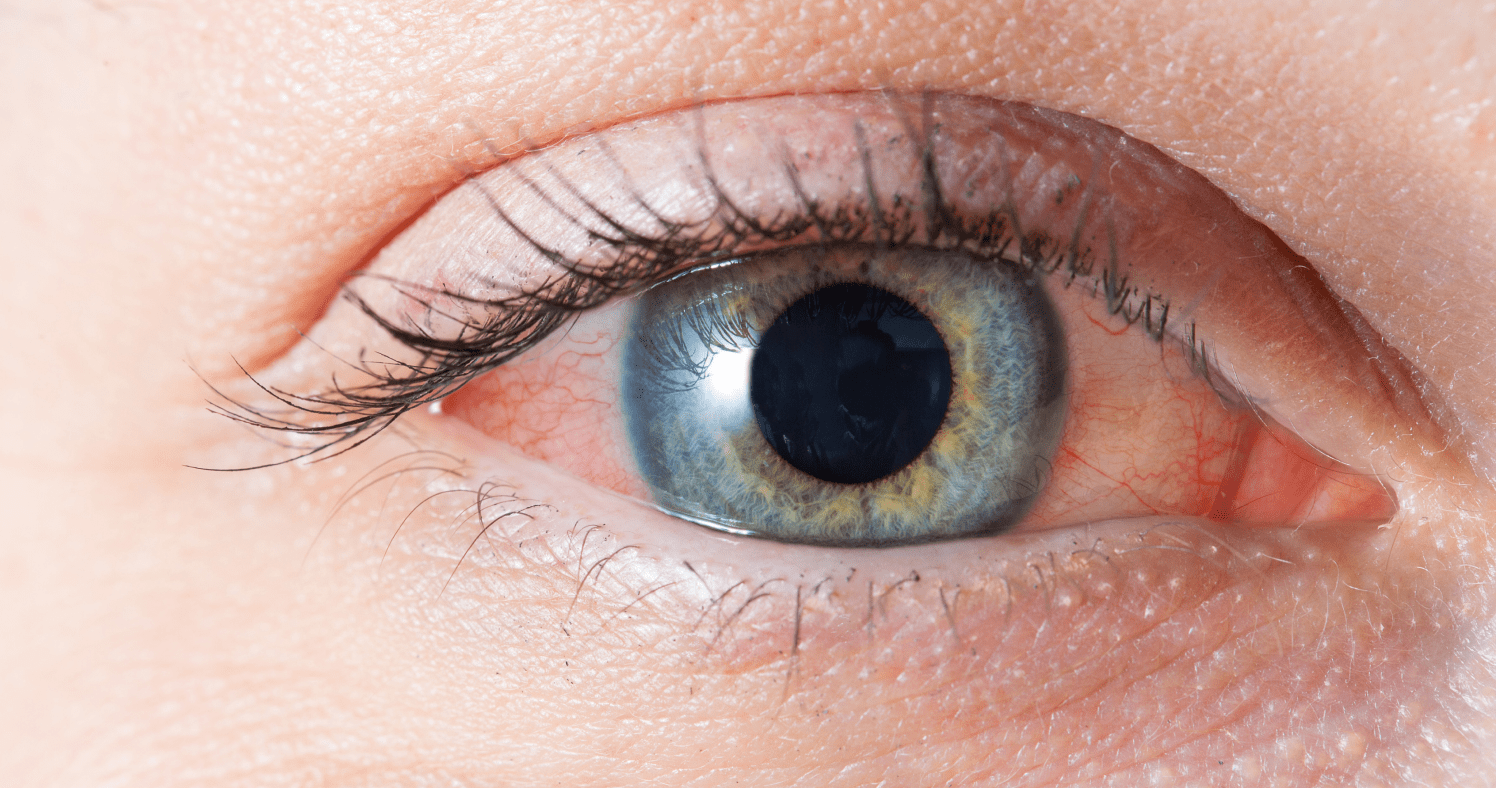
What are mechanical causes of red eyes?
- Incomplete eyelid closure while sleeping: For some people, the eyelids do not completely close at night while sleeping. The eyes become red due to overexposure. A number of conditions may result in incomplete lid closure including thyroid eye disease, lid trauma, lid surgery, facial palsy, lid trauma and lack of eyelid skin tonicity.
Ask a sleeping partner to check to see if the lids are closing. If incomplete closure is a problem, a sleep mask or goggles may be a good solution. Several dry eye websites sell products specifically for incomplete lid exposure [2].
- Eye trauma: Accidents happen quickly when least expected. Whether from a car accident or a splash of a toxic chemical, quick medical intervention is often needed. Chemicals, especially alkaline chemicals, quickly penetrate deeply into the cornea and can cause very serious damage.
Flush with an eye wash while seeking immediate medical attention. Seek immediate medical attention for an eye injury, as well.
- Contact lens overwear: Wearing contact lenses can exacerbate underlying conditions such as dry eye disease and allergic conjunctivitis. Red eyes are often the result of wearing contact lenses longer than prescribed. The surface of the eyes requires sufficient oxygen to maintain wellness.
Over the course of a day, a soft contact lens dries out. If the environment is extra dry, limit the amount of wear time. Remove your contact lenses if your eyes are dry, red, irritated or uncomfortable.
Daily disposable lenses have made contact lens wear more comfortable and convenient. Many ocular complications related to contact lens wear are minimized by throwing out used contact lenses at the end of the day.
For allergy sufferers, contact lens cleaning solutions no longer pose a problem. Using clean lenses each day decreases the risk of eye infection.
Red, irritated eyes associated with contact lens wear need to be evaluated by your eye doctor. Remove your contact lenses until your eye appointment and bring the contact lenses with you to your appointment [3,4].
- Eye makeup: Eye makeup may enhance one’s appearance but should be used appropriately to avoid eye irritation and infection.
Mascara and eyeliner should be replaced every six months. These products should never be shared with anyone. Apply eyeliner outside of the eyelashes not next to the eyeball. Remove all eye makeup before bed.
What are infectious causes of red eyes?
- Viral infections: Symptoms include a watery discharge beginning in one eye then involving the second eye. Viral infections are very contagious. Wash your hands frequently and do not share towels. Sometimes viral pink eye occurs with upper respiratory symptoms like a cough and/or sore throat.
While some of these infections are self-limiting, many require further medical evaluation and doctor consultation.
- Bacterial infections: Bacterial infections present with a thick white/yellow/green discharge in the affected eye. Bacterial conjunctivitis is very contagious. Wash your hands often.
Sexually transmitted diseases such as from gonococcus may also cause bacterial infections. Newborns are most often seen with gonococcal infections having been exposed during birth. Treated using antibiotics prescribed by your doctor.
- Chronic conjunctivitis: This condition is frequently associated with crusty eyelashes, swollen, irritated red eyes, and usually lasts for more than a week or two. There are multiple possible underlying causes of chronic infection including chronic allergic conjunctivitis, chronic viral or bacterial infection, and chronic blepharitis.
Chronic blepharitis is a condition involving the eyelids. Chronic blepharitis may result from rosacea, Demodex mites and/or dry eye. Consult your eye doctor to assess the best course of action.
What are systemic and eye health related causes of red eyes?
- Glaucoma: The incidence of glaucoma and dry eye increases with age. This combination can lead to ocular surface irritation and redness.
Preservatives in the drops for glaucoma therapy may be associated with redness. Whenever possible use preservative-free drops.
- Ocular surgery: Redness typically occurs after ocular surgery be it cataract removal, a scleral buckle procedure for retinal detachment or refractive surgery. As the eye heals, the redness normally dissipates.
Temporary irritation may persist related to dry eyes. If this occurs, artificial tears, punctal plugs or possibly a prescription eye drop like Xiidra or Restasis may be needed.
- Conjunctival lumps and bumps: When looking in a mirror, a lump or bump may be noticed on the conjunctiva. Is the lump or bump new? Is a blood vessel associated with this lump or bump?
One common type of benign growth that may be seen is a pinguecula. It is essentially a callous developed from accumulative effects of UV light exposure and the elements. If the pinguecula grows onto the cornea, it is known as a pterygium. Both are associated with conjunctival redness. Pterygia are often treated surgically.
Unfortunately there are lumps and bumps that are not benign. Lumps and bumps of greater concern are ones that change in size, shape, color and/or have blood vessels associated with it.
Please have your doctor take a look at growths, especially new growths, on your conjunctiva, lids and surrounding skin. Eye doctors also examine the inside of the eye for growths like malignant melanomas.
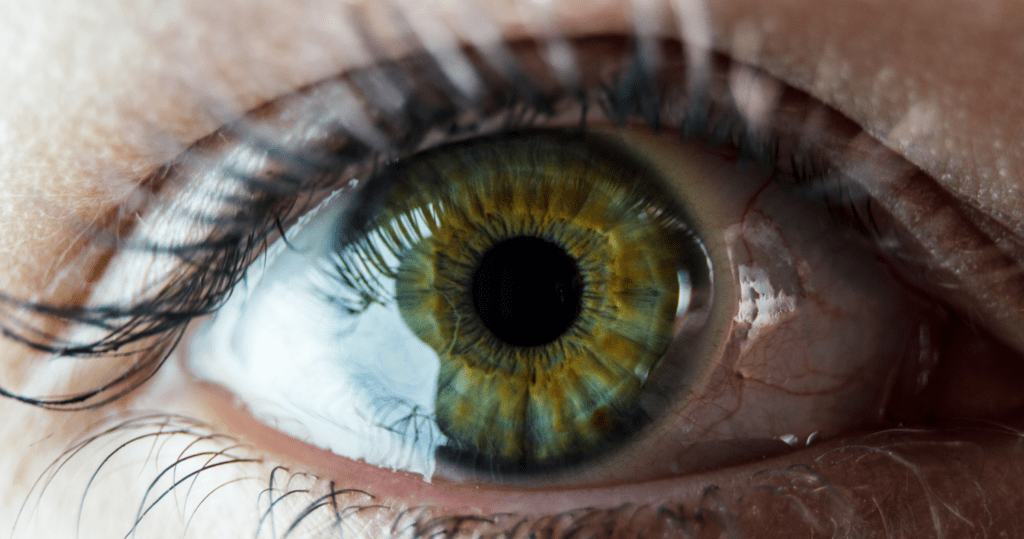
- Allergic conjunctivitis: The hallmark of allergic conjunctivitis is watery, burning and itchy eyes along with redness affecting both eyes. The lids may be puffy and swollen. It is not uncommon to sneeze and have a runny nose, as well.
Allergic conjunctivitis may correspond to seasonal allergies from pollen. Pet dander is also a common cause of red eyes. Wash your hands after petting your animal so the dander is not accidentally rubbed into the eyes. Dust mites can be a source of eye allergies.
The use of air filters and impermeable bed coverings will help to limit exposure to dust mites. Keeping the eyelids clean and removing makeup at night will help to mitigate irritation.
Depending upon the source and severity of the allergic reaction, there are a variety of options. Of course, avoidance of the offending allergen is always the best way to not have a reaction, but this is not always possible.
- Solutions to allergic reactions: For mild reactions, artificial tears and a cold compress may do the trick. An over the counter antihistamine drop will help with itching.
For more severe reactions, prescription eye drops and even oral medications may need to be prescribed by an eye doctor. A decongestant eye drop will help to get “the red out” quickly and provide a bit of relief. If used too frequently, rebound redness may occur, so use only as needed.
Consult your eye doctor or pharmacist about newer over the counter eye drops that are more effective than decongestant eye drops without having to worry about rebound redness. - Health conditions: Diabetes, thyroid eye disease, rheumatoid arthritis, Sjogren’s and lupus are examples of systemic health conditions that may be associated with red, irritated eyes. Your treating physician and eye doctor will work in tandem for the best and most comfortable solution.
- Subconjunctival hemorrhage: Occurs when a blood vessel located underneath the conjunctiva breaks. This type of red eye looks much worse than it is. The area where the bleed occurred will be the color of blood.
These sometimes happen after refractive or cataract surgery, or after vomiting, or a sneezing fit. Subconjunctival hemorrhages will resolve in a week or two without treatment but a cool compress may provide some comfort.
- Red eyes associated with dry eye syndrome: Red, irritated eyes and fluctuating vision are frequently associated with dry eyes. Dry eyes vary in severity and underlying cause. There are two basic types of dry eye disease (DED). One type is called aqueous deficient dry eye and the other is known as evaporative dry eye [5].
In the case of aqueous deficient dry eye an insufficient quantity of tears are produced. This happens to people with Sjogren’s syndrome, damage to the tear glands, age-related viruses, lymphoma and other conditions.
Most people associate thirst with dehydration, but our eyes dry out just like the mouth. Aqueous deficient dry eye occurs with dehydration, so be sure to drink plenty of water.
The more common cause of DED is evaporative dry eye. The oily part of the tear film is responsible for limiting the amount of evaporation that occurs. The oil produced by the meibomian glands may be insufficient or poor quality.
Keeping the lids clean, using a warm compress, and massaging the eyelids can improve the flow of the oil. Nutritional supplementation with omega-3 fatty acids may improve the quality of the oil. There are various treatments available through your doctor [6,7].
- More causes of dry eye related redness: Blowing air will dry out the surface of the eyes which is especially problematic when traveling in a car or airplane. Dress appropriately to avoid the need for heat or air conditioning. Use single dose non-preserved artificial tears, as needed. For comfort while traveling by air, wear an eye mask during the flight.
Air pollution adds to dry eye discomfort. Medications such as antihistamines, diuretics and anti-depressants will dry out the eyes. Menopause is also associated with dry eye.
Tips to keep your eyes clear, comfortable & healthy.
- Wear protective glasses appropriate for the activity such as for computer work, gardening, welding and skiing.
- Wash your hands frequently, remove eye makeup at night and keep your eyelids clean.
- Take care of your contact lenses – use as prescribed.
- Get regular eye examinations every 1 – 2 years.
- When symptoms of infectious eye conditions appear, avoid using contact lenses (if you are a contacts-wearer) until treated.
Remember, red eyes are a sign of inflammation. Eating a healthful diet that supports wellness will help to minimize inflammation in the body and the eyes.
Published November 9, 2022|Updated June 5, 2023
SOURCES

Related articles

What are Cataracts?
We’re going to discuss the condition, including causes, treatment, surgery, and prevention.

7 Important Facts You Should Know about Astigmatism
What it is, causes, symptoms, treatment & tips

UV index & how to protect your eyes
What UV index is & how to protect your eyes.
 Oversized
Oversized
 Aviator
Aviator
 Wayfarer
Wayfarer
 Rectangle
Rectangle
 Cat Eye
Cat Eye
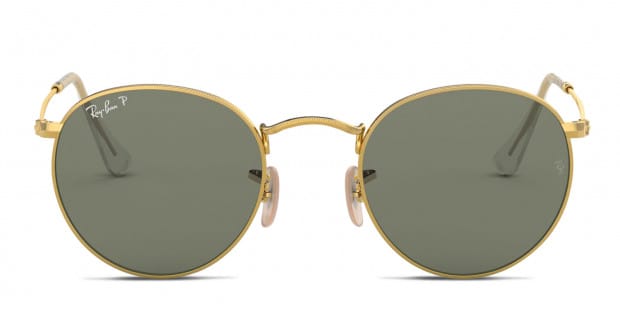 Round
Round



